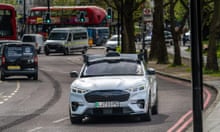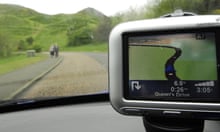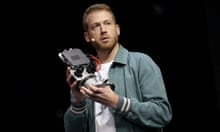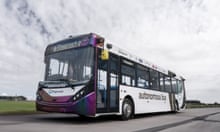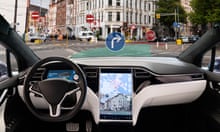An Uber self-driving test car which killed a woman crossing the street detected her but decided not to react immediately, a report has said.
The car was travelling at 40mph (64km/h) in self-driving mode when it collided with 49-year-old Elaine Herzberg at about 10pm on 18 March. Herzberg was pushing a bicycle across the road outside of a crossing. She later died from her injuries.
Although the car’s sensors detected Herzberg, its software which decides how it should react was tuned too far in favour of ignoring objects in its path which might be “false positives” (such as plastic bags), according to a report from the Information. This meant the modified Volvo XC90 did not react fast enough.
The report also said the human safety driver was not paying close enough attention to intervene before the vehicle struck the pedestrian.
Arizona suspended Uber’s self-driving vehicle testing after the incident. The company later settled with Herzberg’s family.
Uber and the US National Transportation Safety Board (NTSB) are investigating the incident. Uber has already reached its preliminary conclusion, according to the report. A comprehensive NTSB report is expected later.
“We’re actively cooperating with the NTSB in their investigation. Out of respect for that process and the trust we’ve built with NTSB, we can’t comment on the specifics of the incident,” an Uber spokesperson said in a statement. “In the meantime, we have initiated a top-to-bottom safety review of our self-driving vehicles programme, and we have brought on former NTSB chair Christopher Hart to advise us on our overall safety culture. Our review is looking at everything from the safety of our system to our training processes for vehicle operators, and we hope to have more to say soon.”
The collision marked the first fatality attributed to a self-driving car, the development of which has frequently been labelled as the only way to eliminate road deaths for those inside and outside the car.
The incident was not the first controversy to involve Uber’s self-driving efforts, which the company sees as key to its survival as a ride-sharing or taxi firm. The company has been involved in a long-running battle with former Google self-driving car outfit Waymo over theft of technology around Anthony Levandowski.
Uber’s self-driving technology was also called 5,000 times worse than Waymo’s in an independent analysis in 2017, while it has had legal tussles with various US states where it has tried to test vehicles.

